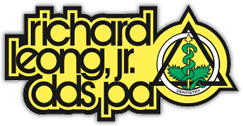Services Offered
Endodontics
Endodontics is the diagnosis and treatment of problems with the inside of the teeth, including the soft tissue known as dental pulp. The most common endodontic procedure is the root canal, although endodontists also perform procedures to correct cracked and split teeth, re-treat previous procedures that have not healed properly, and diagnose oral and facial pain.
Periodontics
Gum Disease
 Periodontal or gum disease is an infection of the tissues that surround and support your teeth. In the early stage (gingivitis), gums may swell and bleed easily; in the more advanced stage, teeth can loosen and fall out. Good oral hygiene and regular dental exams are essential in gum disease prevention.
Periodontal or gum disease is an infection of the tissues that surround and support your teeth. In the early stage (gingivitis), gums may swell and bleed easily; in the more advanced stage, teeth can loosen and fall out. Good oral hygiene and regular dental exams are essential in gum disease prevention.
Gum Therapy
Once upon a time, patients with gum disease could expect to lose their teeth at an early age. Gum disease has also been shown to increase a person’s risk of cardiovascular disease. Surgical treatment used to be the only option to try and prevent this, but dentists were not always able to stop the disease from progressing. Now we have learned that gum disease is caused by a bacterial infection, and have developed non-surgical treatment plans to stop or slow down decay so patients can keep their natural teeth.
Oral Surgery
Oral surgery may be required to diagnose or treat injuries and diseases in the mouth. Biopsies can determine the presence of oral cancer or tumors, which may then be surgically removed (excised). Tooth extractions prevent or treat damage caused by impacted wisdom teeth or crowding. Surgical contouring of the jaw or gum line can correct jaw alignment problems, TMJ, malocclusion (“bad bite”) or other problems.
 Restorative
Restorative
When your teeth need restoration, we can choose from several different materials, including: silver amalgam, composite resin, gold, porcelain and porcelain fused to metal. Since each tooth and restoration is unique, patients must understand their treatment goals assisted by Dr. Leong. Then we will recommend the best material for your specific situation.
Crowns
Crowns are used to strengthen and improve the shape, size or color of teeth. They can support broken or weak teeth or those with large fillings; provide a smooth, strong, attractively contoured surface for stained, misshapen or otherwise abnormal teeth; and aid in the implantation of bridges and other implants.
Bridges
Bridges are natural-looking tooth replacements which help maintain facial structure, reduce stress on the jaw and fill in the gaps caused by missing teeth. Fixed bridges are cemented to the existing teeth and do not come out. Removable bridges can be taken out and cleaned at home.
Dentures-Full and Partial
Full dentures are appliances in the mouth that are made of acrylic and replace all the missing teeth of each arch of the mouth. Dentures gain their suction by covering the boney ridge. If the ridge is high enough then the patient will have adequate suction. However most lower dentures do not have adequate suction. Patients will either have to use dental adhesive to give them the retention they need or resort to dental implants to help them gain much more solid retention of the lower denture.
Partial denture are made of acrylic also. The more long lasting partials have a metal base. Partial dentures replace some of the teeth in an arch. They are held in the mouth usually by wires or clasps which surround certain teeth for support. Precision partial dentures have special attachments which do away with the wires for retention and either attach internally or externally into a tooth that has a crown. These attachments are designed to put less stress on the anchor teeth that support the partial denture. They are more esthetic because they do not have the wires which are unsightly and can be seen when an individual smiles.
Orthodontics
Orthodontics refers to the diagnosis, treatment and prevention of dental and facial irregularities such as crooked teeth, crowding, spacing, protruding upper teeth, overbite, underbite, open bite and crossbite. Braces and other orthodontic appliances are used to correct these “bad bites” or malocclusions by moving the teeth and jaw into proper alignment. Treatment is designed to help the patient both aesthetically (by improving the smile) and functionally (by improving the bite). Patients who undergo orthodontic treatment often enjoy greater self-confidence with their new smile.
Orthodontic treatment can help patients of all ages, although treatment is most effective as soon as a problem is detected. Children should have an orthodontic exam before they turn 7 to detect and treat any problems early and to ensure optimal results. It is important to treat malocclusions before problems worsen or cause tooth decay, gum disease, surface wearing, stress on the gum and bone, jaw misalignment, headaches or face and neck pain. Dr. Leong performs the new orthodontics called 3D Orthodontics (Clear Braces). This system uses clear plastic aligners which cover the teeth and do away with the wires and braces that are so unsightly and uncomfortable.
Esthetics
 Esthetic dental procedures can not only improve your smile but can also boost your self-confidence. Dr Leong and his friendly staff provide a full range of cosmetic and restorative dentistry services.
Esthetic dental procedures can not only improve your smile but can also boost your self-confidence. Dr Leong and his friendly staff provide a full range of cosmetic and restorative dentistry services.
We offer both surgical and non-surgical procedures, including whitening and bleaching, porcelain veneers, tooth-colored fillings, crowns, bridges and dental implants. With as little as one trip, you can start your journey toward a happier, healthier smile.
Lasers and New Technology
 Dr. Leong has always been on the cutting edge of dentistry and provided the best and newest techonological advances to his patients. He has been fully computerized in his office records ever sine 1994. He uses advanced diagnostic equipment such as the digitized radiographs and intraoral cameras to help both him and his patients to detect problems in the mouth sooner and thereby restore his patient’s mouths much more comprehensibly. The dental laser is the most recent addition to his dental armamentarium. The Waterlase MD is the best, safest and most advanced laser of all of the lasers.
Dr. Leong has always been on the cutting edge of dentistry and provided the best and newest techonological advances to his patients. He has been fully computerized in his office records ever sine 1994. He uses advanced diagnostic equipment such as the digitized radiographs and intraoral cameras to help both him and his patients to detect problems in the mouth sooner and thereby restore his patient’s mouths much more comprehensibly. The dental laser is the most recent addition to his dental armamentarium. The Waterlase MD is the best, safest and most advanced laser of all of the lasers.
Sedation/Analgesia
Sedation Dentistry is available for patients who are nervous, sensitive, or wish to have extensive dental work completed in a single visit. First, you’ll breathe pure oxygen through a mask or tub. N2O is is slowly added to the oxygen, helping you feel more comfortable during the procedure. You will remain awake but feel calm and relaxed.
For more demanding procedures or those individuals who want to be less aware of the procedures performed in their mouth, Dr Leong offers conscious sedation.
After taking medication ahead of time, the patient will still be awake but will not care about the treatment being performed. Because of the gentle nature of the medication the patient will not remember the procedure the next day and best of all will have no untoward side effects from the medication.
Temporomandibular Joint Disorders (TMD/TMJ)
 Chronic facial pain — pain in or around the ear, tender jaw, clicking or popping noises when opening the mouth, headaches and neck aches — may arise from many easily identifiable and treatable causes, including a sinus infection, tooth decay or gum disease. But sometimes the source is more elusive … and it may be TMD, a group of often painful disorders affecting the jaw and chewing muscles. Common causes of TMD include:
Chronic facial pain — pain in or around the ear, tender jaw, clicking or popping noises when opening the mouth, headaches and neck aches — may arise from many easily identifiable and treatable causes, including a sinus infection, tooth decay or gum disease. But sometimes the source is more elusive … and it may be TMD, a group of often painful disorders affecting the jaw and chewing muscles. Common causes of TMD include:
- Trauma to the head or neck
- Oral habits such as clenching or grinding of the teeth
- “Bad” bite or missing teeth
- Arthritis
- Malalignment of the upper and lower jawbones
Reversible or temporary treatments for TMD include physical therapy (TENS-trans cutaneous electrical neural stimulation), stress-reducing exercises, muscle relaxants, mouth protectors to prevent teeth grinding, soft foods, heat/ice packs, avoidance of extreme jaw movements. More extensive treatments may take the form of correctional surgery or pain-relief injections, although surgery may aggravate the problem and is therefore not usually recommended.
Teeth-grinding
Teeth-grinding, or bruxism, occurs when the jaws are clenched and the teeth grind against one another during sleep. Stress and anxiety are often blamed, but sleep disorders, abnormal bite and missing or crooked teeth may also be the culprits. If left untreated, bruxism can lead to headache, sore jaw and painful, loose or fractured teeth.


